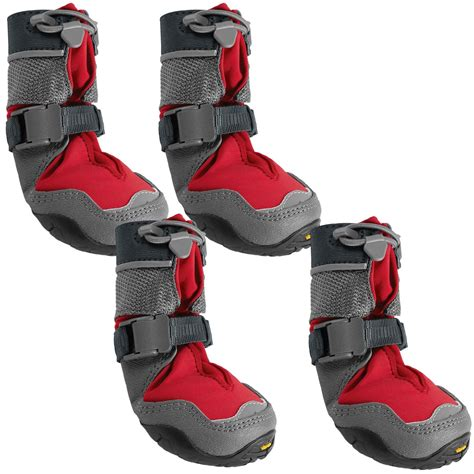Discover the importance of winter boots for dogs, learn how to choose the right pair, and get expert tips on winter paw care for your furry friend.
As a devoted dog owner and avid winter hiker, I've experienced firsthand the challenges of keeping my furry companions comfortable and safe during snowy adventures. One particularly memorable outing with my Labrador, Max, taught me the importance of proper paw protection in harsh winter conditions.
A Chilly Lesson on the Trail
It was a crisp winter morning when Max and I set out for a hike in the Cascade Mountains. The snow-covered trails beckoned, promising a picturesque adventure. However, about an hour into our trek, I noticed Max repeatedly lifting his paws and whimpering. The icy terrain was taking its toll on his sensitive paw pads, and I realized I had made a critical mistake by not protecting his feet.
This experience led me on a quest to find the perfect winter boots for Max, a journey that has taught me valuable lessons about canine foot care in cold weather.
The Great Debate: Do Dogs Really Need Winter Boots?
In my opinion, while not all dogs need winter boots all the time, they can be incredibly beneficial in certain situations. I've found that for dogs like Max with sensitive paws or those exposed to extreme cold, ice, or chemical de-icers, boots can be a game-changer.
However, it's important to note that dogs' paws are naturally designed to handle various terrains and temperatures. The paw pads contain a complex system of blood vessels that help regulate temperature and provide traction. This is why many dogs can comfortably walk on snow without any protection.
What the Experts Say
According to a study published in the Journal of Veterinary Emergency and Critical Care, prolonged exposure to temperatures below 32°F (0°C) can lead to frostbite in dogs' paws. Additionally, the American Kennel Club (AKC) recommends using dog boots in situations where paws may come into contact with salt or other ice-melting chemicals, which can cause irritation and chemical burns.
When to Consider Dog Boots
Based on expert advice and personal experience, here are situations where dog boots may be necessary:
- Temperatures below 32°F (0°C) for extended periods
- Icy conditions that may cut paw pads
- Areas treated with salt or chemical de-icers
- Long hikes on rough terrain
- Dogs with existing paw injuries or sensitivities
Choosing the Right Boots for Your Dog
Finding the perfect pair of dog boots can be challenging, but here are some tips to help:
-
Measure carefully: Use a ruler to measure the width of your dog's paw when bearing weight. Most boot sizes are based on paw width.
-
Consider the activity: For hiking, look for boots with sturdy soles and good traction. For city walks, lighter, more flexible boots may suffice.
-
Check the closure system: Velcro straps or elastic closures should be snug but not too tight.
-
Look for reflective elements: These can increase visibility during early morning or evening walks.
-
Prioritize waterproofing: In snowy conditions, waterproof boots are essential to keep paws dry and warm.

Ruffwear: A Leader in Canine Outdoor Gear
One brand that has consistently impressed me is Ruffwear. Their Polar Trex winter boots have been a game-changer for Max. These boots feature a Vibram outsole for excellent traction, insulation for warmth, and a secure velcro closure system.
Ruffwear, founded in 1994, has built a reputation for creating high-quality, performance-driven gear for outdoor-loving dogs. Their commitment to innovation and understanding of canine needs makes them a go-to brand for many adventure-seeking dog owners.
Acclimating Your Dog to Boots
Introducing boots to your dog requires patience and positive reinforcement. Here's a step-by-step guide:
- Let your dog sniff and investigate the boots
- Put the boots on while inside, one paw at a time
- Offer treats and praise as you put each boot on
- Allow your dog to walk around the house with the boots
- Take short outdoor walks, gradually increasing duration
- Always monitor your dog for signs of discomfort
Remember, it's normal for dogs to walk funny at first – they're adjusting to the new sensation!
Beyond Boots: Comprehensive Winter Paw Care
While boots are excellent protection, they're not the only way to care for your dog's paws in winter. Here are additional tips:
- Trim paw hair: Keep the hair between paw pads trimmed to prevent ice ball formation.
- Use paw balm: Apply a protective balm before walks to create a barrier against salt and chemicals.
- Wash and dry paws: After walks, rinse paws with warm water and dry thoroughly to remove any irritants.
- Check regularly: Inspect paws for cuts, cracks, or signs of irritation after winter outings.
Conclusion: A Step in the Right Direction
That challenging hike with Max taught me an invaluable lesson about the importance of proper paw protection in winter. Now, equipped with the right boots and knowledge, our winter adventures are filled with joy rather than discomfort.
Remember, every dog is unique, and what works for one may not work for another. Pay attention to your dog's needs and behavior, and don't hesitate to consult with your veterinarian if you have concerns about winter paw care.
By taking these steps to protect your furry friend's feet, you can ensure that your winter outings are safe, comfortable, and full of tail-wagging fun!
